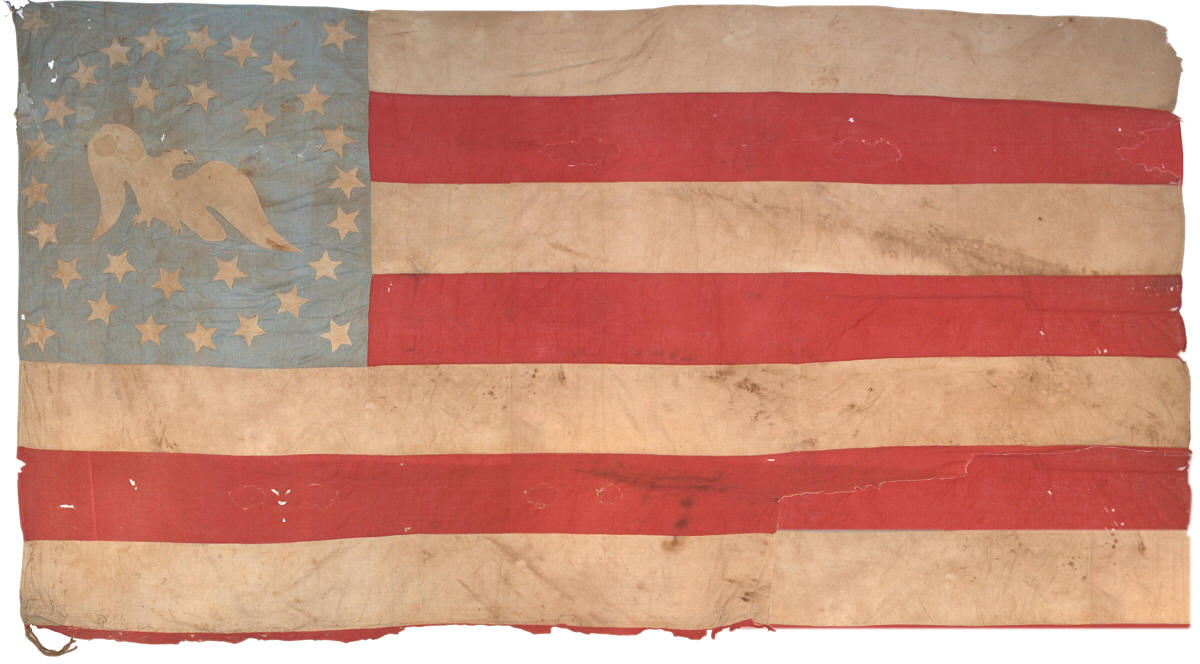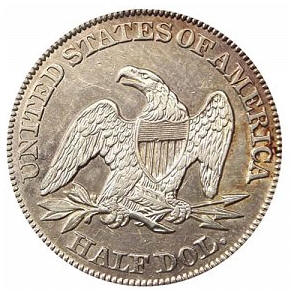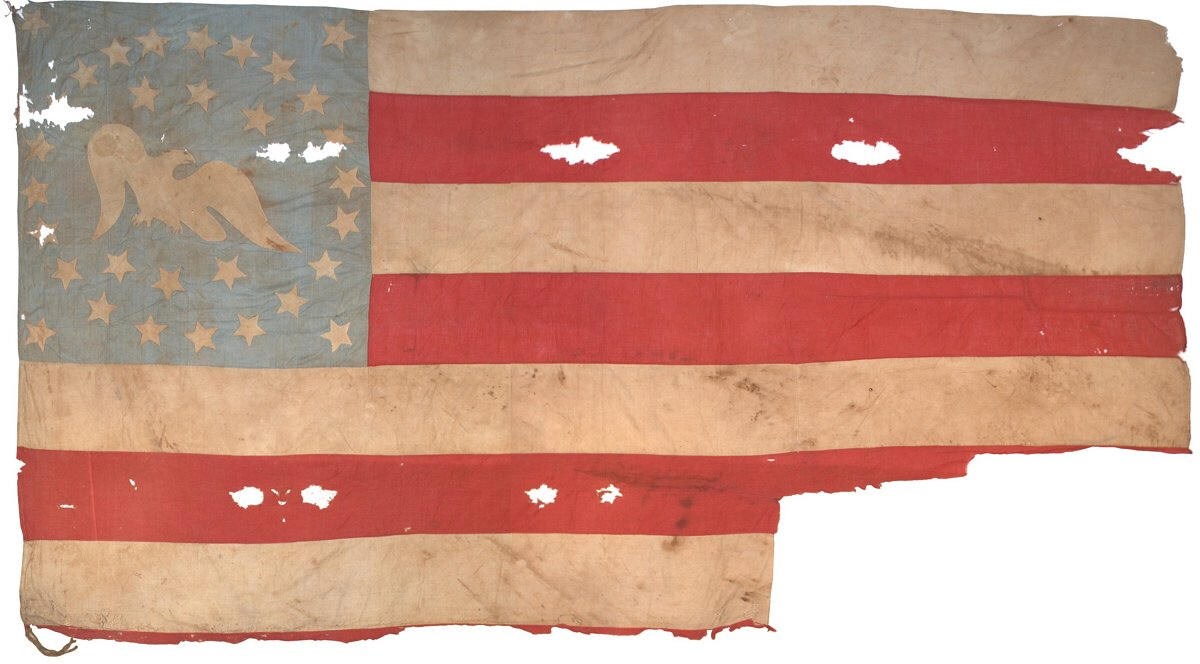|

This flag is remarkable
for several reasons. It was discovered in the attic of
the farmhouse on Walker Farm in Johnstown, Ohio. The
flag is homemade, hand sewn, and made of cotton fabric.
It has several features which make it a fascinating folk
art masterpiece of early American flag making. The most
striking visual feature of the flag is the folksy
American eagle in the canton of the flag. Flags with
eagles incorporated into their cantons are incredibly
rare. Early 19th century flags which have eagles painted
into their cantons are documented, and a very small
handful still exist, perhaps four or fewer. The earliest
of these were known as Indian Peace Flags, and were
purported to have been gifted to various Native American
tribes as a symbolic gesture from the United States
Government. One such flag is held in the collection of
the Smithsonian Museum of American History in
Washington, D.C. Flags with sewn eagles and an arch of
13 stars above them are known to have been flown aboard
steamers and various vessels in the mid-19th century.
 There
are a few survivors of the type and there are many
period mid-19th century paintings of ships which show
these types of flags. The flag here is rather unique
among the very few surviving flags with eagles in their
canton in that it has its full complement of stars and
the eagle is clearly a folksy representation of the
Federal eagle as it appeared on coinage of the time.
This style of the seated eagle, head turned, wings down,
with one wing slightly higher than the other, was used
on American coinage between 1807 and 1891. During that
period, the general style of the eagle was reproduced on
a wide range of goods including quilts, crockery,
military equipment, and flags, though there are probably
fewer than five examples of flags with this trait that
survive. The 31 stars of the flag represent California
statehood and the star count and construction of the
flag date it squarely in the period of 1850-1858. The
medallion pattern, with four There
are a few survivors of the type and there are many
period mid-19th century paintings of ships which show
these types of flags. The flag here is rather unique
among the very few surviving flags with eagles in their
canton in that it has its full complement of stars and
the eagle is clearly a folksy representation of the
Federal eagle as it appeared on coinage of the time.
This style of the seated eagle, head turned, wings down,
with one wing slightly higher than the other, was used
on American coinage between 1807 and 1891. During that
period, the general style of the eagle was reproduced on
a wide range of goods including quilts, crockery,
military equipment, and flags, though there are probably
fewer than five examples of flags with this trait that
survive. The 31 stars of the flag represent California
statehood and the star count and construction of the
flag date it squarely in the period of 1850-1858. The
medallion pattern, with four
 corner stars and the
central eagle within two arches of three stars, one arch
above and one arch below, is a unique design. Two other
known flags from this period, both with 13 stars and a
folksy sewn eagle in the canton, have a similar trait of
an unusual number of stripes (one has eleven, and one
has nine). Those two flags, like this flag, are homemade
also made entirely of cotton. One is dated 1857 and its
topmost and bottom-most stripes are white. corner stars and the
central eagle within two arches of three stars, one arch
above and one arch below, is a unique design. Two other
known flags from this period, both with 13 stars and a
folksy sewn eagle in the canton, have a similar trait of
an unusual number of stripes (one has eleven, and one
has nine). Those two flags, like this flag, are homemade
also made entirely of cotton. One is dated 1857 and its
topmost and bottom-most stripes are white.
As expected for some
flags, this flag suffered some rodent damage when it was
stored in the attic of the Walker family farm house, as
can be seen in the photo of the flag in its un-restored
state. It was also missing a portion of the third red
stripe, the fourth white stripe, and there are
indications that there was a bottom red stripe on the
flag, although the hoist rope of the flag, which is
original to the period when it was used and flown, was
adjusted to the current height, indicating that the
original maker of the flag removed the bottom stripe
when it became damaged and did not repair or replace it.
Given extremely small
number of homemade flags with eagles in the canton known
to survive and the scarcity of pre-Civil War flags of
any type, this example is a true rarity and special
masterpiece of folk art Americana.
|

